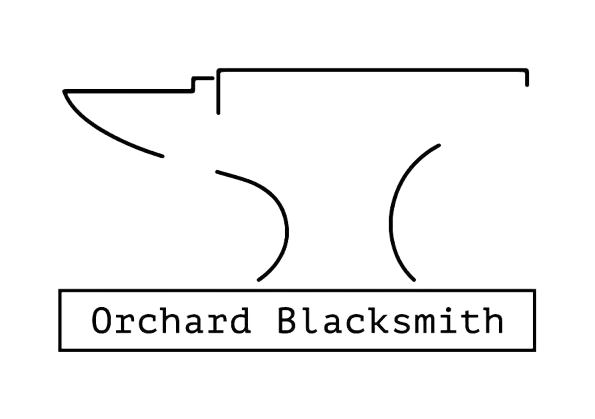From Rough to Refined: The Final Touches of Blacksmithing
When most people think of blacksmithing, they picture the roar of the forge, glowing steel, and hammer-on-anvil action. But what many don’t realize is that a huge part of the craft happens after the forging is done. That’s where the real finesse comes in — the finishing touches that take a rough piece of metal and turn it into a functional, beautiful work of art.
In this post, we’ll break down three key finishing techniques: grinding, polishing, and etching — what they are, why they matter, and how they transform a forged item from raw to refined.
1. Grinding – Shaping and Smoothing the Foundation
What it is:
Grinding is the process of removing material from the surface of a forged piece using abrasives, typically with a belt grinder, angle grinder, or sanding wheel. It’s usually the first step in the finishing phase.
Why it matters:
After forging, most pieces are rough around the edges — literally. Grinding smooths out hammer marks, refines the profile, and gets your geometry (such as blade bevels or tool edges) just right.
When to grind:
To shape bevels or edges (especially for blades)
To smooth rough surfaces or uneven transitions
To remove scale and oxidation from forging
Tips:
Start with coarse grits (36–60) to remove material quickly, then work up to finer grits (120–400) for smoother results.
Keep the workpiece cool — overheating can ruin temper and warp thin sections.
Use a steady hand and consistent angles, especially on blades or tools.
2. Polishing – Bringing Out the Beauty
What it is:
Polishing is the art of refining the surface even further to give it a shine — whether that's a clean satin finish or a mirror-like reflection. It’s typically done with finer abrasives, buffing wheels, or polishing compounds.
Why it matters:
Polishing enhances the look of the metal and gives it a finished, professional feel. It can also help protect the surface by removing micro-abrasions and reducing corrosion.
Levels of polish:
Satin / Brushed finish: Smooth with visible directional lines; less reflective but elegant and durable.
Semi-gloss: Smooth with some shine but not fully mirrored.
Mirror finish: Highly reflective, glossy surface that shows every detail — including flaws, so it takes skill.
When to polish:
On high-end knives, decorative pieces, or jewelry
Before etching (to get clean contrast)
When you want to make the metal pop
Tips:
Progress gradually through grits (e.g., 400 → 800 → 1200 → buffing).
Clean between each step to avoid scratching with leftover grit.
Don’t rush — polishing is slow but rewarding work.
3. Etching – Revealing the Soul of the Steel
What it is:
Etching involves using acid or another corrosive agent to selectively "eat away" at the surface of the metal, creating contrast or texture. It’s most famously used to reveal patterns in Damascus steel, but it can also highlight maker’s marks or logos.
Why it matters:
Etching brings out hidden details — especially in layered steels or pattern-welded items. It’s a way to give your work personality and visual depth.
Common types of etching:
Ferric chloride etch (for Damascus and carbon steels)
Vinegar or coffee etch (for darker patina effects)
Electro-etching (for logos or text)
When to etch:
On Damascus steel to reveal the layers
On carbon steel to add contrast or patina
To highlight engraving or stamping
Tips:
Always wear proper safety gear — acids are no joke.
Clean the surface well before etching for even results.
Neutralize the acid after etching with a baking soda bath to stop the reaction.
For deeper contrast, combine etching with polishing (etch, polish the high points, etch again).
Final Thoughts: The Devil’s in the Details
Grinding, polishing, and etching aren’t just technical steps — they’re the final flourishes that define your craftsmanship. These techniques separate the merely functional from the truly memorable. Whether you're finishing a knife, a decorative hook, or a forged sculpture, taking the time to do it right shows in every curve, every shine, and every subtle contrast.
If you would like to discuss a potential project with us, please do not hesitate to contact us.
